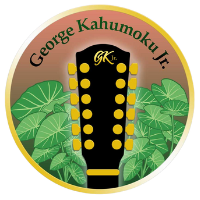![Dryland Kalo Growing [Taro] In South Kona](/wp-content/uploads/2022/04/blog-strip1500-x-200-1.png)
Dryland Kalo Growing [Taro] In South Kona
An introduction by Nancy Kahumoku: This essay was written by George on growing Taro. Keep in mind that when he wrote this he lived on the Big Island, today he lives on Maui.
“During the 1920’s to the 1950’s according to my Uncle Willie Kahumoku, kalo was grown by our family mostly for home use.
In Honaunau my uncle Charlie Mokuohai and Aunty Anna farmed about forty acres of taro for commercial poi use and owned Royal Poi. Anyone with extra taro would sell to Royal Hawaiian Poi. The varieties we grew in Kealia, where I now reside, forpoi were mainly lehua maoli, lehua ula ula, poni, palali’i, nauea, o’opu kai and several varieties of piko taro such as piko lehua and piko keokea. The table-eating varieties we grew were mostly mana ulu, mana keokea, and mana ‘ele’ele. Mana ‘opelu, kumu, and lauloa varieties and one called “pake taro”(but not the bunlong variety) we grew for pig feed and ‘opelu (mackerel fish) chum, as these had less favorable characteristics. They were too itchy to eat, made poi “hu”, (rise and overflow), or were huge and/or with lots of keikis.
We fished and planted by the moon. We found that the three nights before the full moon called Po ‘Akua, Po Hoku and Po Mahealani were best for planting taro. We sometimes planted taro on Hilo or new moon. Other moon phases were used to plant ulu (breadfruit), ko (sugar cane), maila (bananas) and uala (sweet potatoe). Like my ancestors, I still use the 0’0 or digging stick for planting, exept my 10’0 was made of spring steel instead of wood. Taro was planted by softening the earth with the ’10 and planted maka lua (two eyes or two huli) in a hole twenty four inches wide in rows four feet apart. It was lonely and would grow better side by side with a friend. Before planting the land was prepared by clearing, slashing and burning. The huli was Holo makaukau (made ready before hand). All taro was planted at a slanted 45° angle in a Ku or Hina fashion. The ku style of planting slanted the huli 90° perpendicular toward the sun’s path across the sky. The hina style of planting taro placed the huli 90° away from the sun’s path across the sky. “Ku” was used for making big corms with little or no keikisi “Hina” was used for building up huli and making lots if keikis.
During the early 1900’s mango, hau and kukui trees were planted near the stone walled edges of the fields. Along with ama’u ferns the young leaves of these trees were used to pori or mulch from six to twelve inches deep around the newly planted taro once that taro had taken and was standing up (about six to eight weeks after planting). It was the job of the youngsters ages twelve to seventeen to climb the trees and break off the young branches. Even today if you go into the South Kona uplands, one can find huge groves of mango, hau and kukui planted on the edges of the taro and the leaves were also used for fertilizer and mulching. Before the taro began to cover and canopy the entire ground, around three months old, it was weeded one last time and left alone until harvest. No one was allowed to play or make noise near the kalo patch as it was a sacred place.
The taro grew to six, seven and even eight feet tall. When the leaves would start to shrink and drop the corms would begin to form. When the leaves were three to four feet in height or between six to twelve months old, depending on the variety, the taro was harvested. If not harvested in time certain varieties like lehua would begin to loli-loli or rot. You were considered a good taro farmer if four to five maka lua (or holes) harvested filled a one hundred ten pound coffee bag. The taro was then taken home where it was steamed in the imu or on an open fire in a fifty-five gallon drum. The taro was then pounded into pari ‘ai with a stone poi pounder by two folks sitting across from each other straddling one long poi board. It was fun to hear the kupunas’ poi pounders “talk” to each other while pounding poi.
Pari ‘ai was really stiff pounding taro with little or no water added. The pari ‘ai was placed in thirty gallon kela mania (earthen crocks) for storage. Poi was then made by putting into smaller bowls of about two gallons each and fermented according to individual taste. My great-grandmother liked herpoi three to four weeks old, white and bubbly, as does my older brother who grew up with our great-grandparents.
Today we still grow taro much like our kupunas did, except we use commercial fertilizer, pig manure and macadamia nut and coffee husks for mulch along with the mango, ti and banana leaves.Thank you for this opportunity to share.”
